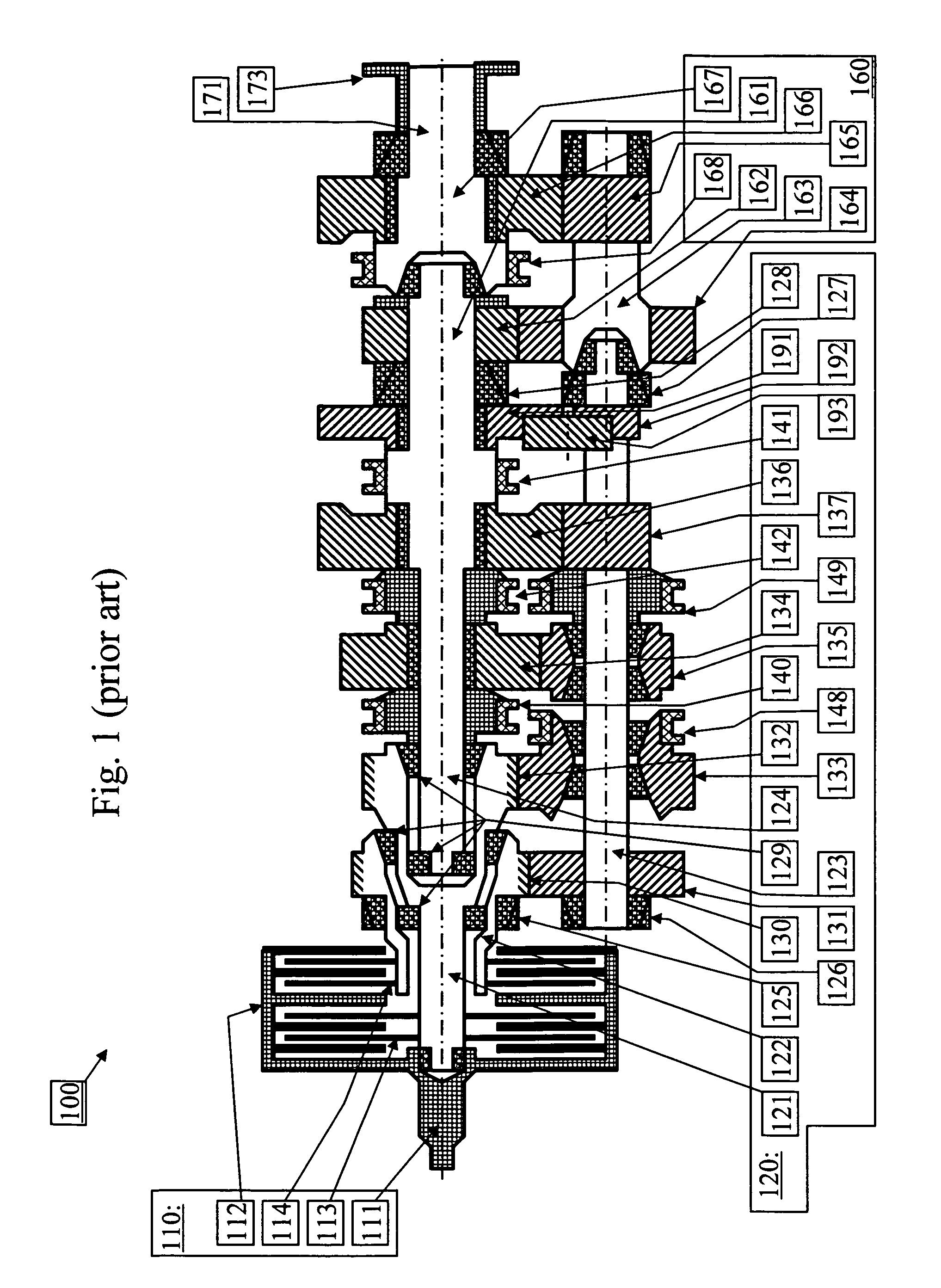Multi-clutch transmission for a motor vehicle
a transmission and multi-clutch technology, applied in mechanical equipment, transportation and packaging, gearboxes, etc., can solve the problems of insufficient number of gears and speed reduction ratios, inability to install the transmission into the vehicle, and less suited to heavy vehicles, etc., to achieve high power transfer, reduce production costs, and reduce the effect of production cos
- Summary
- Abstract
- Description
- Claims
- Application Information
AI Technical Summary
Benefits of technology
Problems solved by technology
Method used
Image
Examples
Embodiment Construction
[0028]FIG. 1 shows schematically a longitudinal section the rotating parts of a transmission 100 for a heavy vehicle. The transmission 100 is composed of a dual frictional clutch unit 110, a main transmission 120 of dual clutch transmission type, and a range section 160 of non-planetary type. The dual frictional clutch unit 110 comprises a clutch input shaft 111 driven by an engine crankshaft (not shown), a clutch assembly 132 connected thereto, featuring first and second sub-clutches 113, 114, and an actuator device (not shown) to control the clutch unit.
[0029]The main transmission 120 has two input shafts; a first input shaft 121 and a second input shaft 122. The first input shaft 121 can be rotationally driven by the first sub-clutch 113. Similarly, the second input shaft 122 can be rotationally driven by the second sub-clutch 114.
[0030]A first primary gearwheel 132 is rotationally fixed or integral with the first input shaft 121. A second primary gearwheel 130 is rotationally fi...
PUM
 Login to View More
Login to View More Abstract
Description
Claims
Application Information
 Login to View More
Login to View More - R&D
- Intellectual Property
- Life Sciences
- Materials
- Tech Scout
- Unparalleled Data Quality
- Higher Quality Content
- 60% Fewer Hallucinations
Browse by: Latest US Patents, China's latest patents, Technical Efficacy Thesaurus, Application Domain, Technology Topic, Popular Technical Reports.
© 2025 PatSnap. All rights reserved.Legal|Privacy policy|Modern Slavery Act Transparency Statement|Sitemap|About US| Contact US: help@patsnap.com



